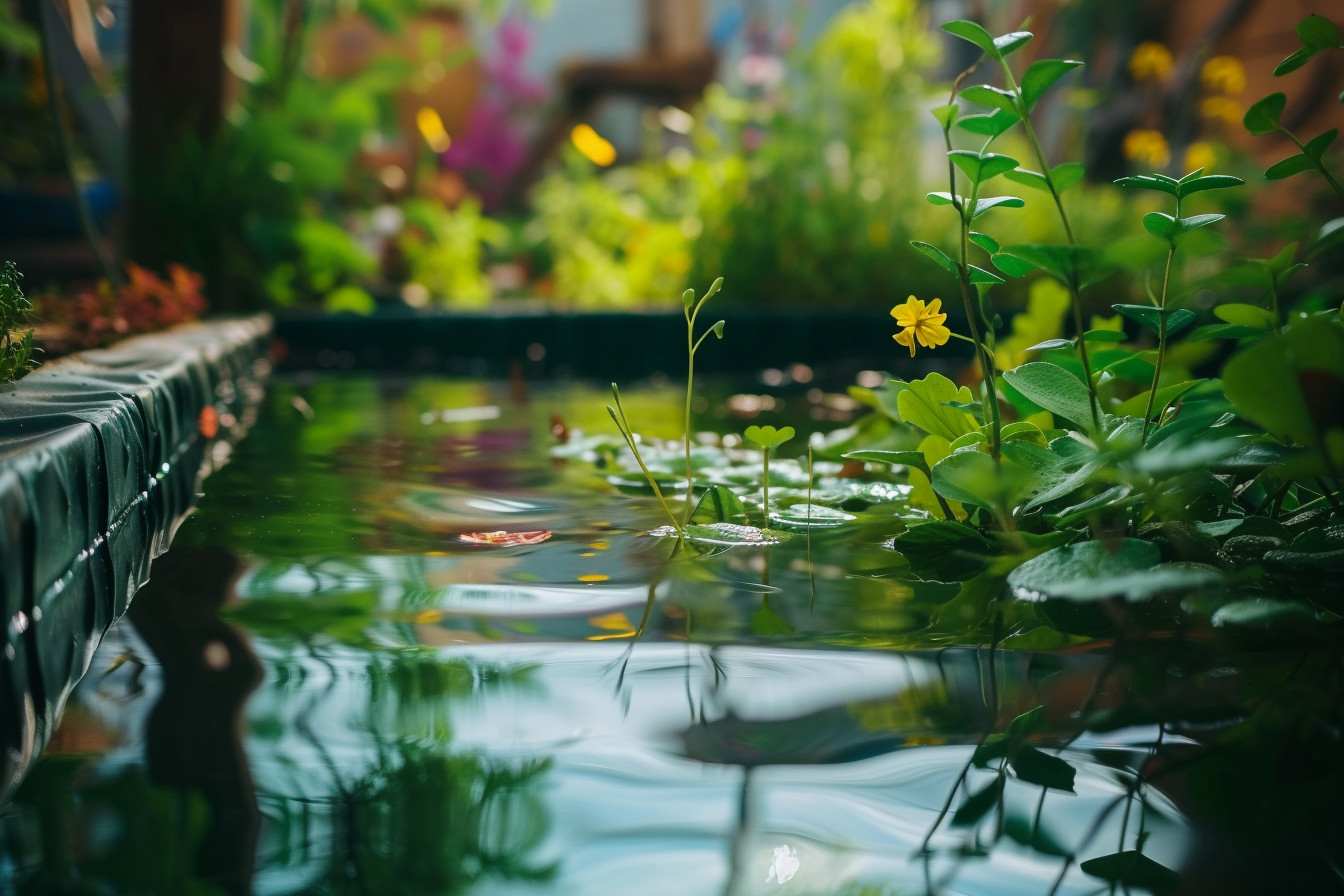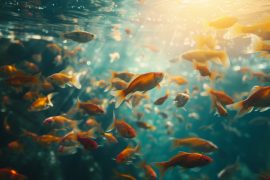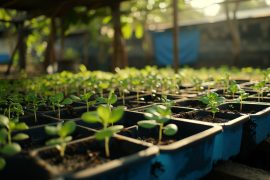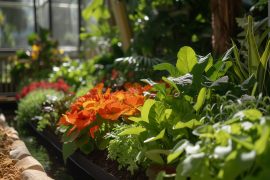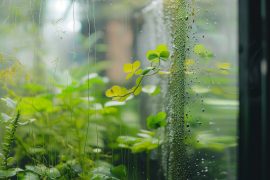Diving into the world of aquaponics, I quickly learned that balancing pH levels isn’t just important—it’s critical. Picture this: Your backyard has transformed into a lush haven where fish and plants live in harmony, each benefiting from the other. Sounds amazing, right? Well, achieving that dream hinges on maintaining the perfect pH balance.
PH basically measures how acidic or alkaline water is; it’s a scale ranging from 0 to 14, with 7 being neutral. In an aquaponic system—where you’re growing plants directly in water enriched by fish waste—a slight tip one way can upset both your green buddies and aquatic pals. It turns out fish thrive best between slightly acidic and neutral waters (pH levels around 6-7), while most plants prefer things slightly more towards the basic side yet close enough not to differ drastically.
What is pH balance, and why is it important in aquaponic systems?
Diving into the world of aquaponics, there’s this seemingly mysterious term that keeps popping up: pH balance. But really, it isn’t all too enigmatic once you get to know what it signifies and how crucial a role it plays within your aquatic garden haven.
So here goes: at its core, the concept of pH encompasses measuring acidity or alkalinity on a scale from 0 to 14. A reading smack dab in the middle at about neutral would be labeled as seven; go below that threshold for more acidic conditions, while anything higher veers towards being alkaline (or base). It seems pretty straightforward until you grasp just how sensitive our submerged green friends, along with their fishy comrades, are regarding these numbers.
The role of pH in the health and growth of fish and plants
Alright, let’s dive into a world where water chemistry plays a monumental part in nurturing life. Think about it as crafting the perfect cocktail that both your leafy greens and finned friends can thrive on—welcome to balancing pH in aquaponics.
pH balance isn’t just some numbers game; it’s crucial for ensuring your aquatic inhabitants not only survive but flourish. For those newbies out there, ‘pH’ measures how acidic or alkaline water is on a scale from 0 to 14. Fish generally enjoy swimming in a comfortable range between 6 and 8, while most plants love soaking their roots somewhere close to this range too.
Now picture this: you’ve meticulously maintained an ideal environment until one day things spiral slightly off course. A minor deviation in pH levels might seem innocent, but left unchecked? Boom! Like dominoes falling down chain reactions occur—unhappy fish stressin’, nutrients locking up so plants start frowning… You get my drift?
And here comes another plot twist (because Mother Nature adores keeping us on our toes): certain times when micro-mysteries unfold, invisible bacteria work behind wet stages, converting ammonia fiesta leftover by Mr.Fish & Co., altering said delicate number dance further!
Yet beyond survival quests lies sheer beauty; the understanding canopy beneath surfaces connects souls seeking tranquility amidst the chaos called ‘life’. Isn’t magic floating upon serene liquidity essence what gardening whispers ancient tales across time zones weaving harmony into reality fabric itself? Alright, maybe I got a bit carried away poetically speaking, but the point stands firm.
Infinite cycles intertwining zen-like patience threading each droplet nourishes reciprocity principle resting heart holistic approach honoring mysterious aqueous realms undeniably marvels awakening slumbering senses dormant within urban sprawls encasing spirit adventure alas awaits embryonic seeds thoughts inspiration germinating amongst y’all dear readers yearning embark journeys paralleling mine shared narrative thus far.
Testing and monitoring pH levels in your aquaponic system
Testing and keeping an eye on the pH balance of your aquaponic setup is a bit like being a gardener, scientist, and detective all rolled into one. It’s fascinating! You’re not just growing plants; you’re managing a whole ecosystem that includes fish, bacteria, water chemistry, etc., and it’s as cool as it sounds.
First things first—why bother with testing? Well, think of your aquatic inhabitants (both plant and animal), each having their own comfort zone. When conditions stray too far from what they dig—the right temperature range or nutrient level—they start to stress out. But when we talk about pH—that delicate scale measuring acidity versus alkalinity—it really needs to be just right for everything in this unique environment to thrive harmoniously.
So how do we keep tabs on our watery world’s wellness check-ups? With handy tools called pH meters or test strips, which are must-haves in every aspiring aquaponist´s toolkit,
Test Strips: These little guys provide you with quick clues, though they are less precise than electronic methods.
Digital meters: They offer more accuracy but require regular calibration using buffer solutions, so remember, handling them carefully ensures they return the favor by giving reliable readings whenever needed!
Routine checks twice weekly are recommended, especially if introducing new elements, adding complexity, altering dynamic existing parameters, and even further compelling the need to maintain vigilant stewardship, protect intricate interdependencies, form a foundation, and thrive in sustainable Aquasonic masterpiece hands!
Factors that can influence pH balance in aquaponics
Diving deep into the world of aquaponics, it’s clear that maintaining a balanced pH level isn’t just important; it’s crucial. But hey, what exactly messes with our system’s zen? Let me walk you through some of the usual suspects.
First off, we’ve got the fish. Our aquatic buddies are at the heart of any thriving aquaponic setup, but they do bring their own baggage. As they go about their day-to-day lives, eating and swimming, waste products (we’re talking ammonia) get released into the water. Ammonia is not only harmful to your plants if left unchecked, but it also swings your pH levels towards the high or alkaline side over time.
Now let’s talk decomposition—sounds grim, I know! When plant material breaks down naturally in an aquafarm setting by beneficial bacteria converting wastes from solid form to something more palatable for our green friends up top, it provides essential nutrients needed for growth. However, transformation during this process, known as the absolutely vital process, does have a tendency to make water a tad bit acidic, especially when there is an excessive amount of organic matter floating around that is not cleaned properly.
Water itself plays no small part either folks inherently coming out tap has its base which dictate direction shift right gate thus always smart take measure ensure changes gradual don’t stress living components significantly
Maintaining optimal pH levels through proper system management
Getting the hang of maintaining ideal pH in an aquaponic garden isn’t just science; it’s a bit like art. Imagine you’re painting with water chemistry instead of colors; every tweak and adjustment brings your ecosystem closer to perfection.
So here’s the scoop: The sweet spot for most aquaponic systems hovers between 6.0 and 7.5 on the pH scale. It’s this narrow range that keeps both fish happy swimming and plants fully quenching their thirst for nutrients.
Why is staying within this tiny window crucial? Well, let me paint you a picture from my own backyard saga—ahem, adventure! Once upon a not-so-balmy spring afternoon, I noticed my lush greens looking rather glum despite all the necessary attention paid up until then (I’m talking about checking ammonia levels religiously at sunrise). After some detective work involving test strips, which felt oddly similar to doing DIY litmus artwork, lo and behold, there was extreme alkalinity glaring back at me. Who knew, right?
Here are a few lifelines that saved, or rather balanced and restored, our leafy companions:
Monitoring regularly can’t be stressed enough, even if it means setting daily reminders, because gardening also loves rhythm!
Rainwater collection became our go-to solution when tap water got too “city-like”; it was generally softer, lowering those stubborn peaks.
Adjusting slowly is key. Nobody likes abrupt changes, especially microorganisms coursing through veins in our verdant underworld. Accept nothing but subtleties lest they rebel, sparking off unseen chaos beneath the tranquility above. Imagine underwater civil unrest!
Final Thought
This journey through the importance of pH balance in aquaponic systems has been both enlightening and a tad complex, hasn’t it? Exploring this topic from start to finish showed me how crucial maintaining that sweet spot for pH levels really is. Who knew something as small as a decimal point could make such a big difference in your garden’s health?
Here’s what I’ve gathered:
Keeping an eye on those pH levels isn’t just about checking boxes; it’s about ensuring our aquatic plants have everything they need to thrive.
A balanced system means happier fish and more vibrant plants—basically, nature at its finest.
So let’s talk numbers briefly:
Ideal PH Level
Aquatic Plants
Fish
6.5–7
Most conducive range
Compatible with most freshwater species
Remembering these figures helps us strike that perfect harmony within our ecosystems.
Diving into the world of aquaponics opened my eyes not only to its complexities but also to the sheer joy gardening brings—a peaceful encounter, connecting deeply with nature while nurturing life. It transformed my understanding of sustainability too, teaching me valuable lessons on creating environments where every element supports another.
As lush green leaves sprawl over baskets and fish gently swim around their watery home beneath them, I can’t help but marvel at this beautiful synergy between flora and fauna right here in my own backyard!
Aquaponics taught me patience (the boy did it!), perseverance, and a thing or two about chemistry without setting foot inside some lecture hall! Honestly, though, it makes you appreciate even more the delicate balances required by Mother Nature herself for all living things under her care.
In wrapping up, folks, remember—all good stuff requires effort, including keeping our aquatic buddies’ environment pristine-boundy. Of course, there’ll be hiccups along the way—but hey? Isn’t learning half fun anyway?
